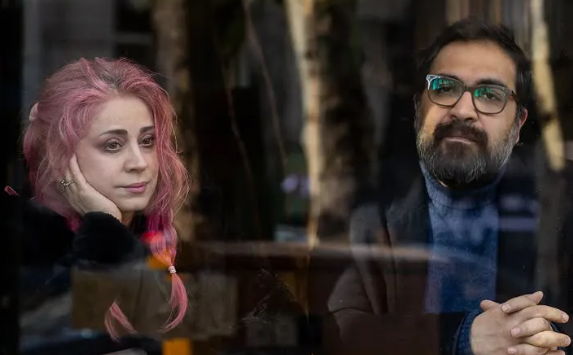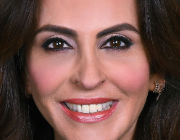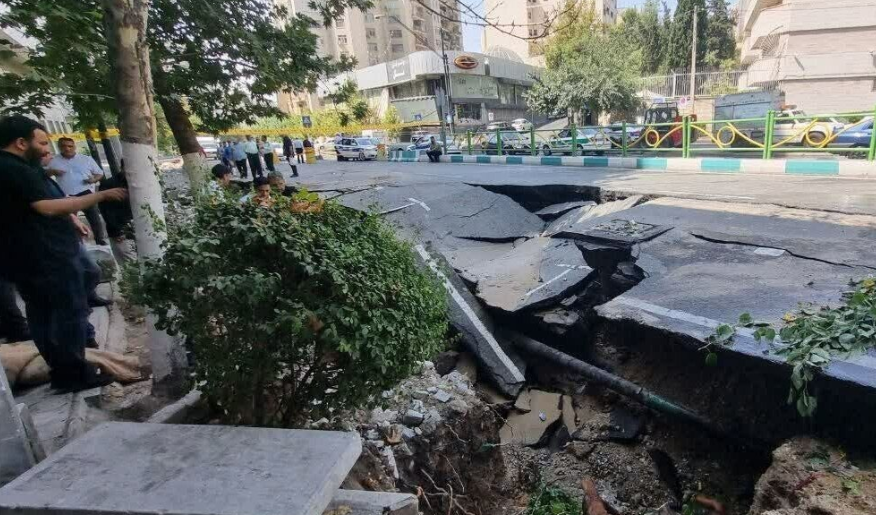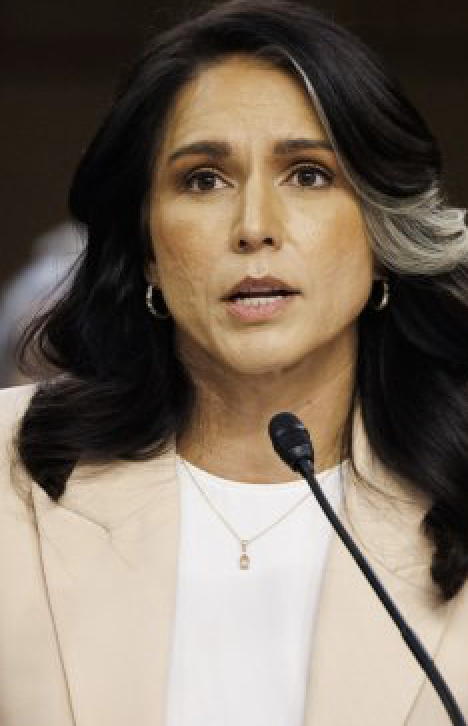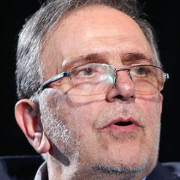November 22-2013
Twin suicide bombs outside the Iranian Embassy in Beirut killed 23 people Tuesday, including three Iranian members of the embassy community, in one of the worst bombings ever to hit the predominantly Shiite area of southern Beirut.
The twin blasts were further evidence of the growing animosity among Arab Sunnis for Shiites and Shiism.
The bombing at the Iranian embassy recalled the attack 30 years ago against the American embassy in Beirut. That was widely considered as the start of warfare by extremist Islamic groups against the United States.
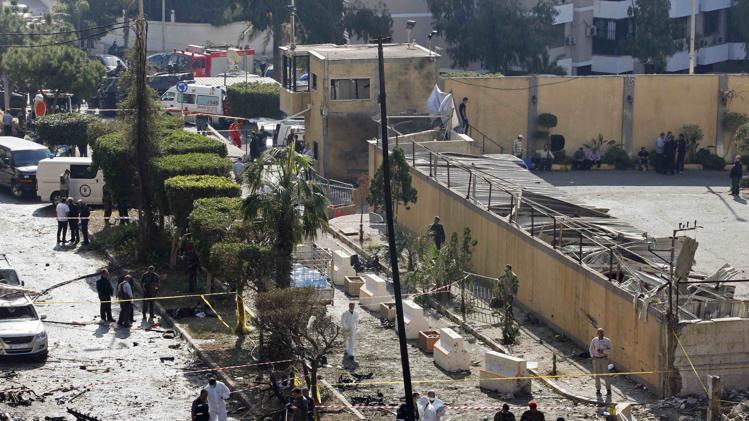
The bombs went off only hours before the Iranian national soccer team was scheduled to play Lebanon in an Asian Cup elimination game in Beirut. The Iranian team decided to go ahead with the game, but Lebanese security officials, fearful of trouble in the stadium, locked out the fans and the game was played in an empty stadium.
Tuesday’s blasts hit the upscale neighborhood of Janah, a stronghold of Hezbollah, leaving pools of blood and bodies on the rubble-strewn street amid burning cars.
A small Sunni group, the Abdullah Azzam Brigades, said it launched the bombings and pledged to continue such attacks until the Iranian-supported Hezbollah militia withdraws all its forces from Syria. There was no way to authenticate the claim.
Charles Lister, an analyst at IHS Jane’s Terrorism and Insurgency Center, told Reuters the group is known for its links to the Persian Gulf and to Palestinian refugee camps in Lebanon. He said two of its senior military leaders are Saudi nationals. But the group claims affiliation to Al-Qaeda and is not believed to be funded by the Saudi government. The United States listed it as a terrorist organization last year.
Iranian Ambassador Gha-zanfar Roknabadi said the dead included the embassy’s cultural attache, Ebrahim Ansari, a mid-level cleric. Speaking to Hezbollah’s Al-Manar TV from inside the embassy compound, the ambassador said Ansari took up his post in Lebanon a month ago and was overseeing all regional cultural activities.
The ambassador said all the embassy staff “inside the embassy” were uninjured. He said the cultural attache was arriving at the embassy when the bombs went off and had not reached the safety of the building. Officials said two other Iranians living in an apartment building used for diplomats and their families across from the embassy were also killed; it wasn’t known if they were embassy staffers or family members of staffers.
The embassy building itself appeared undamaged, beyond blown-out windows. It stands inside a compound, well back from a surrounding wall. The metal gate in the compound wall was a twisted wreck that blocked entry. Far more damage was done to the facades of six neighboring apartment buildings that fronted directly on the streets and saw their balconies shorn off. Beyond the human toll, the bulk of the damage was to cars, many of which were in flames, and trees, several of which were uprooted, in the street outside the compound wall
In Tehran, Foreign Ministry spokeswoman Marziyeh Afkham blamed Israel for the attacks, although Hezbollah and Syrian officials fingered Saudi Arabia and Qatar.
Afkham said the bombings were “an inhuman crime and spiteful act done by Zionists and their mercenaries.” The Islamic Republic consistently denies there is any conflict between Shias and Sunnis and accuses non-Muslims of trying to create strife between the two branches of Islam.
But Arabs don’t necessarily see it that way. A Syrian government statement on the bombings said, “Each of the terrorist attacks that strike in Lebanon, Syria and Iraq reek of petrodollars,” a reference to oil-rich Saudi Arabia and Qatar, which are funding Syrian rebels.
Lebanese Health Minister Ali Hassan Khalil said the twin explosions killed 23 people and wounded 146. He said the toll might rise as many of the injured were in serious condition.
Six of the dead were Hezbollah militiamen assigned to guard the embassy and stationed at the compound wall and gate..
In the 1983 US Embassy bombing, 63 people were killed, but only 17 were Americans. It is normal in embassy bombings that the vast majority of those killed are local people in the surrounding area and not nationals of the country whose embassy is targeted.
A Lebanese security official said the first suicide attacker was on a motorcycle that carried two kilograms (4.4 pounds) of explosives. He blew himself up at the large black main gate of the Iranian mission, the official said. Others said an embassy guard fired at the man as he sped toward the gate.
Moments later, a second suicide attacker driving a car rigged with 50 kilograms (110 pounds) of explosives struck about 10 meters (yards) away, the official said.
This was much less explosive than in the April 18, 1983, attack on the US embassy, which was estimated to involve 900 kilos (2,000 pounds) of explosive.
Reuters said security camera footage showed a slightly different scenario. It said the video showed a man wearing an explosives belt rushing to the embassy gate on foot and blowing himself up. A few moments later, a car parked two buildings away from the embassy compound blew up.
It appeared that the first attacker might have been trying to blow open the gate so the driver with the car bomb could drive through, smash into the embassy and blow up the building. In the end, however, the embassy building was virtually unscathed.
The statement by the Abdullah Azzam Brigades said the attack was a double suicide bombing.
“We tell those who carried out the attack, you will not be able to break us,” Hezbollah lawmaker Ali Mikdad told Al-Mayadeen TV. “We got the message and we know who sent it and we know how to retaliate.”
Previous large-scale attacks targeting Hezbollah strongholds include an August 15 car bombing in the southern Beirut suburbs that killed 27 people and wounded more than 300. A less powerful car bomb targeted the same area July 9, wounding more than 50 people.
The explosions reinforced a widespread belief among Lebanon’s strongly pro-Hezbollah Shiite population that it would remain a target of jihadist groups that have flooded Syria in an effort to overthrow President Bashar al-Assad.
“They are not Muslims, they are animals,” said Miriam, a local resident as she went to find her children at a nearby school. “They will never stop attacking us.”
Much of southern Beirut remains under tight Hezbollah, Lebanese Army and police security, including extraordinary measures during last week’s Ashura religious holiday that saw the area shut to street traffic. Although Hezbollah maintains a strong security presence around Iran’s embassy, the area itself is located away from Hezbollah’s office complex in a nearby neighborhood.
“The embassy isn’t in the [security zone],” a harried Hezbollah security official told McClatchy News after the blast. “Embassies have to be open; they’re very hard to protect.”
PressTV, the English language outlet of Iranian state broadcasting, complained that both the United States and the UN Security Council were silent about the bombing. However, US Secretary of State John Kerry condemned “today’s senseless and despicable terrorist bombings at the Iranian embassy in Beirut.”
He said, “The United States knows too well the cost of terrorism directed at our own diplomats around the world, and our hearts go out to the Iranian people after this violent and unjustifiable attack.”
At the UN, which PressTV also criticized, both Secretary General Ban Ki-moon and the Security Council also condemned the terrorist attacks.
As of the Iran Times deadline, PressTV had not issued a correction.

